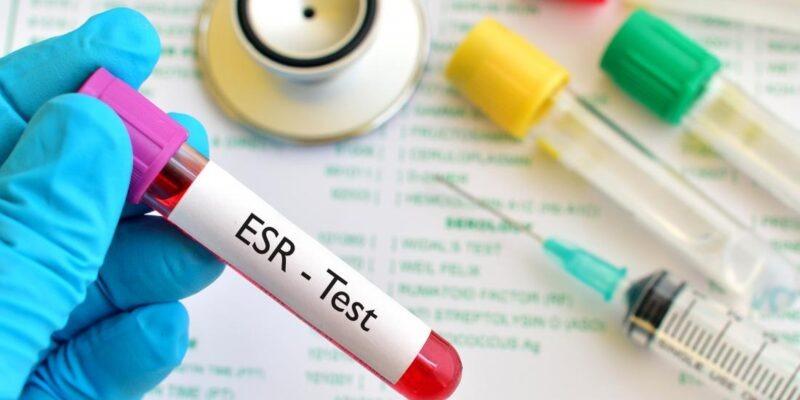The ESR Test (Erythrocyte Sedimentation Rate) is a blood test that measures the rate at which red blood cells (erythrocytes) settle at the bottom of a test tube over one hour. This rate can help detect inflammation in the body, although it is not specific to any particular disease. Elevated ESR levels often indicate the presence of inflammation caused by infections, autoimmune diseases, or other medical conditions.
Key Uses of the ESR Test
- Detecting Inflammation: The primary purpose of the ESR test is to detect general inflammation in the body. It can help identify conditions such as rheumatoid arthritis, lupus, and inflammatory bowel disease.
- Monitoring Chronic Conditions: For patients with chronic inflammatory diseases, the ESR test can track disease activity and response to treatment over time.
- Evaluating Treatment Effectiveness: The test is useful for assessing how well treatments for inflammatory conditions are working, allowing healthcare providers to adjust treatment plans as needed.
- Screening for Infections: The ESR test can help identify infections in the body, such as pneumonia or tuberculosis, when combined with other diagnostic tests.
Factors Affecting ESR Levels
- Age and Gender: ESR levels typically increase with age and are generally higher in women than in men.
- Pregnancy: ESR naturally rises during pregnancy due to changes in blood composition and hormonal influences.
- Medications: Certain medications, including oral contraceptives and anti-inflammatory drugs, can influence ESR results.
- Anemia: Conditions like anemia can lead to elevated ESR levels, as there are fewer red blood cells to sediment.
Conditions Leading to Elevated ESR
- Autoimmune Diseases: High ESR levels are often associated with autoimmune conditions such as rheumatoid arthritis, lupus, and vasculitis.
- Infections: Bacterial infections, such as osteomyelitis (bone infection) or tuberculosis, can cause significant elevations in ESR.
- Cancers: Certain cancers, including lymphoma and multiple myeloma, can lead to increased ESR levels.
- Chronic Inflammatory Conditions: Diseases like inflammatory bowel disease (Crohn’s disease and ulcerative colitis) are linked to elevated ESR due to ongoing inflammation.
ESR and Other Diagnostic Tests
- C-reactive Protein (CRP): The ESR test is often used alongside CRP to provide a more comprehensive view of inflammation in the body.
- Complete Blood Count (CBC): This test can help identify other underlying issues like anemia or infection, which may also elevate ESR levels.
- Imaging Studies: X-rays, ultrasounds, or MRIs may be performed alongside ESR testing to assess the extent of inflammation or damage in specific areas of the body.
Importance of ESR in Early Detection
- Early Diagnosis of Inflammatory Conditions: The ESR test can help detect inflammation early, even before other symptoms appear, enabling prompt treatment to prevent complications.
Role of ESR in Chronic Disease Management
- Chronic Disease Monitoring: Regular monitoring of ESR levels helps healthcare providers assess disease progression and treatment effectiveness in patients with chronic inflammatory diseases.
ESR Test in Pediatric Care
- Pediatric Applications: In children, the ESR test is useful for diagnosing conditions like juvenile idiopathic arthritis and infections, helping pediatricians make timely treatment decisions.
ESR Test as a Screening Tool
- Screening for Undiagnosed Conditions: The ESR test serves as a preliminary screening tool for patients with nonspecific symptoms, prompting further investigations if levels are elevated.
Limitations of the ESR Test
- Limitations and False Positives: While the ESR test is helpful, it has limitations, including the possibility of false positives due to non-inflammatory causes like pregnancy or aging. Accurate interpretation requires consideration of clinical context and additional diagnostic tests.
ESR Test and Its Role in Geriatric Health
- Considerations for Older Adults: In geriatric populations, the ESR test is particularly important for identifying inflammation or infection, as older adults may present with atypical symptoms. Elevated ESR levels in this age group can help healthcare providers diagnose underlying conditions such as infections, autoimmune diseases. Or malignancies that may not be immediately evident, ensuring timely and appropriate medical intervention.
- Assessing Cardiovascular Risk: The ESR test can be used as an indicator of inflammation related to heart disease. Elevated ESR levels may correlate with increased risk for conditions such as atherosclerosis. Helping healthcare providers evaluate cardiovascular health and develop preventive strategies.
- Cancer Monitoring: In oncology, the ESR test can help monitor disease activity. And response to treatment in cancers like lymphoma and multiple myeloma. Changes in ESR levels during treatment can provide insight into the effectiveness of chemotherapy or radiation therapy.
- Comprehensive Inflammatory Assessment: The ESR test is often used in conjunction with other inflammatory markers. Such as interleukin-6 (IL-6) or tumor necrosis factor-alpha (TNF-alpha). To provide a more comprehensive view of inflammatory processes in the body. This multidimensional approach can improve diagnostic accuracy and treatment planning.
Conclusion
The ESR Test is a valuable tool for detecting and monitoring inflammation in the body. While it does not diagnose specific diseases, it offers important clues for further testing when inflammation is suspect. Regular ESR monitoring, especially in patients with chronic conditions, can guide effective treatment strategies and improve patient outcomes. If you experience symptoms such as joint pain, fever, or fatigue, consult your healthcare provider about the potential need for an ESR test.




More Stories
The Future of Hair Restoration:
The Importance of Mental Health Practices
“Top Dermatologists for Butt Fillers in Dubai”